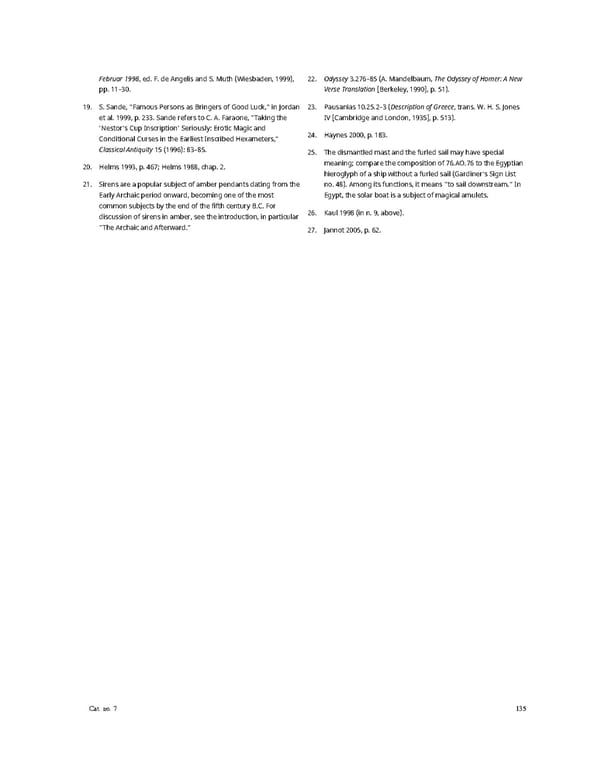Februar 1998, ed. F. de Angelis and S. Muth (Wiesbaden, 1999), 22. Odyssey 3.276–85 (A. Mandelbaum, The Odyssey of Homer: A New pp. 11–30. Verse Translation [Berkeley, 1990], p. 51). 19. S. Sande, “Famous Persons as Bringers of Good Luck,” in Jordan 23. Pausanias 10.25.2–3 (Description of Greece, trans. W. H. S. Jones et al. 1999, p. 233. Sande refers to C. A. Faraone, “Taking the IV [Cambridge and London, 1935], p. 513). ‘Nestor’s Cup Inscription’ Seriously: Erotic Magic and 24. Haynes 2000, p. 183. Conditional Curses in the Earliest Inscribed Hexameters,” Classical Antiquity 15 (1996): 83–85. 25. The dismantled mast and the furled sail may have special 20. Helms 1993, p. 467; Helms 1988, chap. 2. meaning; compare the composition of 76.AO.76 to the Egyptian hieroglyph of a ship without a furled sail (Gardiner’s Sign List 21. Sirens are a popular subject of amber pendants dating from the no. 48). Among its functions, it means “to sail downstream.” In Early Archaic period onward, becoming one of the most Egypt, the solar boat is a subject of magical amulets. common subjects by the end of the fifth century B.C. For 26. Kaul 1998 (in n. 9, above). discussion of sirens in amber, see the introduction, in particular “The Archaic and Afterward.” 27. Jannot 2005, p. 62. Cat. no. 7 135
 Ancient Carved Ambers in the J. Paul Getty Museum Page 144 Page 146
Ancient Carved Ambers in the J. Paul Getty Museum Page 144 Page 146